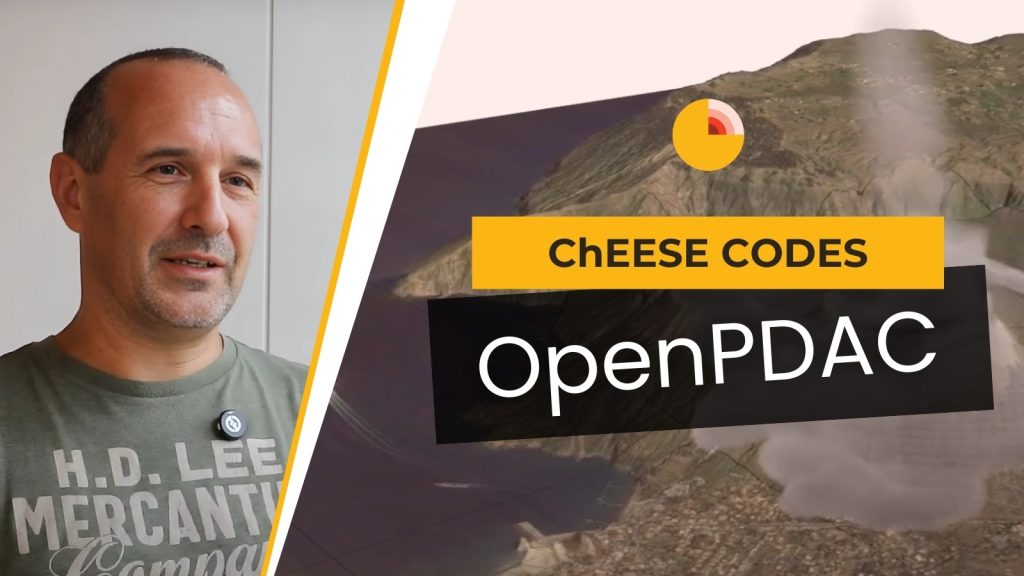Volcanic eruptions are among the most unpredictable and destructive natural disasters. Preparing for such events requires advanced simulation tools, and the OpenPDAC code, developed at the Italian National Institute of Geophysics and Volcanology (INGV), is revolutionising the way we understand and anticipate these complex phenomena.
As part of the ChEESE project, OpenPDAC stands out as a multiphase code capable of simulating the dynamics of volcanic eruptions with exceptional precision. By modelling different phases—gases of various compositions and particles ranging from microscopic to car-sized debris—OpenPDAC addresses the intricate physics of eruptions.
In this interview, Mattia de’ Michieli Vitturi, a researcher at INGV, shares insights into OpenPDAC’s groundbreaking contributions, particularly in simulating phreatic eruptions. These eruptions, caused by the sudden vaporisation of groundwater heated by magma, produce explosive releases of steam and rock fragments.
“Phreatic eruptions are apeculiar kind of eruptions because they are still called eruptions, but there is no real magma that it’s erupted”, explains Vitturi. “They can generate an explosion capable of breaking the host rocks into fragments of different sizes”, he concludes.
Preparing for the Unpredictable
The importance of OpenPDAC’s contributions is underscored by recent phreatic eruptions, such as those in Mount Ontake (Japan, 2014) and White Island (New Zealand, 2019), which caused significant loss of life due to the lack of warning.
“With OpenPDAC, we aim to better understand these events and help mitigate their impact,” says Vitturi. “By combining mathematics, physics, and computational power, we can address the uncertainties inherent in volcanic processes and provide actionable insights for the future.”
OpenPDAC and the ChEESE Project
The ChEESE project leverages OpenPDAC for two critical simulation scenarios:
- Urgent Computing: These simulations generate near-real-time eruption scenarios, aiding early warnings when precursors to an eruption are detected.
- Long-Term Studies: Large-scale probabilistic simulations explore the uncertainties surrounding volcanic eruptions, such as eruption size, location, and impact.
By running extensive simulations, OpenPDAC helps create probabilistic hazard maps, illustrating areas at varying levels of risk. These insights are invaluable for civil protection agencies, which use the results to develop emergency plans for volcanic crises.
About INGV and OpenPDAC
The Italian National Institute of Geophysics and Volcanology (INGV) has a long-standing collaboration with civil protection authorities, providing critical data for managing volcanic activity. OpenPDAC builds on this legacy as an open-source evolution of the earlier PDAC code.
“We combined elements of OpenFOAM, a general framework for computational fluid dynamics, with the legacy of PDAC to create OpenPDAC,” Vitturi notes. “This ensures state-of-the-art modelling capabilities while maintaining accessibility for researchers worldwide.”
Published: 16 01 2025
By Aerton Guimarães and Varvara Vedia
Video Simulations: INGV
From the ChEESE-2P Dissemination Team



